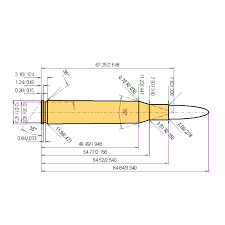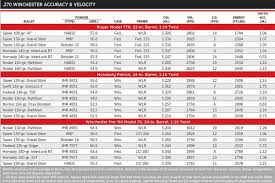Introduction: The Cartridge That Made Jack O’Connor a Legend
If you’re into big game hunting and haven’t heard of the .270 Winchester, it’s time to crawl out from under that rock—preferably without spooking the deer. Since its introduction in 1925, the .270 Winchester has become an American legend. It might not have stormed the beaches of Normandy like the .30-06, but it’s earned a permanent place in the deer woods, elk camps, and hunting stories passed down over generations.
Championed by Outdoor Life columnist and all-around gun guru Jack O’Connor, the .270 Win quickly became a favorite for Western hunters chasing mule deer, elk, and even sheep. Today, almost 100 years later, it’s still going strong.
In this blog, we’ll dig into its history, performance, real-world use, best rifles and loads, reloading potential, and why this cartridge still deserves a spot in your safe.
.270 Winchester Origins: A Bold New Direction
Born in 1925 by necking down the .30-06 Springfield to .277 caliber, the .270 Win was Winchester’s attempt to give hunters a flatter-shooting alternative. And it worked. The cartridge offered high velocity, good energy retention, and relatively mild recoil—a sweet spot few others had nailed at the time.
Jack O’Connor was smitten. With his custom Model 70s, he took game across North America and Africa using primarily 130- and 150-grain bullets. His writings immortalized the round, turning the .270 into a mainstay for serious hunters.
Key Milestones:
- 1925: .270 Winchester released in the Winchester Model 54
- 1936: Becomes more widely accepted with Winchester Model 70
- 1950s onward: Sees widespread use thanks to media and sporting magazines
Cartridge Specs
| Spec | .270 Winchester |
|---|---|
| Parent Case | .30-06 Springfield |
| Bullet Diameter | .277 in |
| Case Length | 2.540 in |
| Overall Length | 3.340 in |
| Max SAAMI Pressure | 65,000 psi |
| Common Bullet Weights | 90 to 160 grains |

It fits long-action rifles and is widely available in bolt guns, semi-autos, and even some single-shots.
Ballistics and Performance
Let’s get to what really matters: Does it hit hard, shoot flat, and keep the recoil in check?
Factory Load Examples (24” barrel):
- 130 gr Ballistic Tip: ~3,060 fps / 2,703 ft-lbs
- 140 gr AccuBond: ~2,950 fps / 2,705 ft-lbs
- 150 gr SP: ~2,850 fps / 2,705 ft-lbs
Drop (200-yd zero, 130 gr BT):
- 300 yds: ~6.2″ drop
- 400 yds: ~18.5″ drop
- 500 yds: ~38″ drop
Recoil:
- Around 17 ft-lbs in an 8-lb rifle. That’s noticeable, but nowhere near the shoulder-thumping .300 Win Mag.
With good optics and practice, the .270 Win is a solid 500-yard cartridge.
Pros & Cons
• Flat trajectory, great for long-range
• Light recoil compared to magnums
• Incredibly accurate with most factory loads
• Easy to find in stores, even small-town shops
• Proven on deer, elk, sheep, and antelope
• Affordable ammo options
• Not ideal for dangerous game (bears)
• Less variety in bullet weights than .30-cal
• Long action limits some rifle models
• Some newer rounds beat it on paper (but not by much)
• Can be overkill for varmints unless you reload
Real-World Use Cases
Deer (Whitetail & Muley)
The 130-grain load is practically a deer-seeking missile. Quick expansion and plenty of power at 200+ yards.
Elk
Stick with 140 or 150-grain bullets, and you’re good. Shot placement is key, but the .270 is up to the task.
Sheep & Antelope
Its flat trajectory shines here. You can reach out across open ground without lobbing lead like a mortar.
Precision Shooting
Reloaders have turned the .270 into a sub-MOA machine with handloads and modern VLD-style bullets.
Best Rifles Chambered in .270 Winchester
- Winchester Model 70 – The classic Jack O’Connor favorite
- Browning X-Bolt – Modern styling, tack-driver accuracy
- Ruger Hawkeye – Durable and built to last
- Tikka T3x – Lightweight, smooth, and surprisingly affordable
- Savage 110 – Accuracy-focused with adjustable AccuTrigger
Best Ammo (Factory Loads)
- Federal Premium Nosler Partition 150 gr – For elk and larger game
- Hornady Superformance SST 130 gr – Flat shooter, ideal for deer
- Remington Core-Lokt 130 gr – Budget-friendly classic
- Barnes VOR-TX 140 gr TSX – Great for tough game with lead-free zones
Reloading the .270 Winchester
If you like squeezing the most out of your cartridges, the .270 is a dream.

Always verify with current manuals (Nosler, Hornady, Lyman).
.270 vs Modern Cartridges: Still Worth It?
It’s not 1925 anymore, but here’s the kicker: The .270 still holds its own.
Newer rounds like the 6.5 PRC or 7mm Rem Mag might beat it on paper, but the .270 shoots flatter than a .308, kicks less than a .30-06, and hits harder than a 6.5 Creedmoor. It’s like driving a 1970s Ford pickup that still runs better than your buddy’s tricked-out Tacoma.
Final Thoughts
There are trendier rounds out there, sure. But if you want a cartridge with a proven track record, practical performance, and the backing of nearly a century of hunters, you can’t go wrong with the .270 Winchester.
It’s not just a “good old round” — it’s a great one.
So whether you’re stepping into your first season or you’ve notched more tags than you can count, the .270 belongs in your lineup. Still deadly. Still dignified. Still dropping deer like it’s 1925.